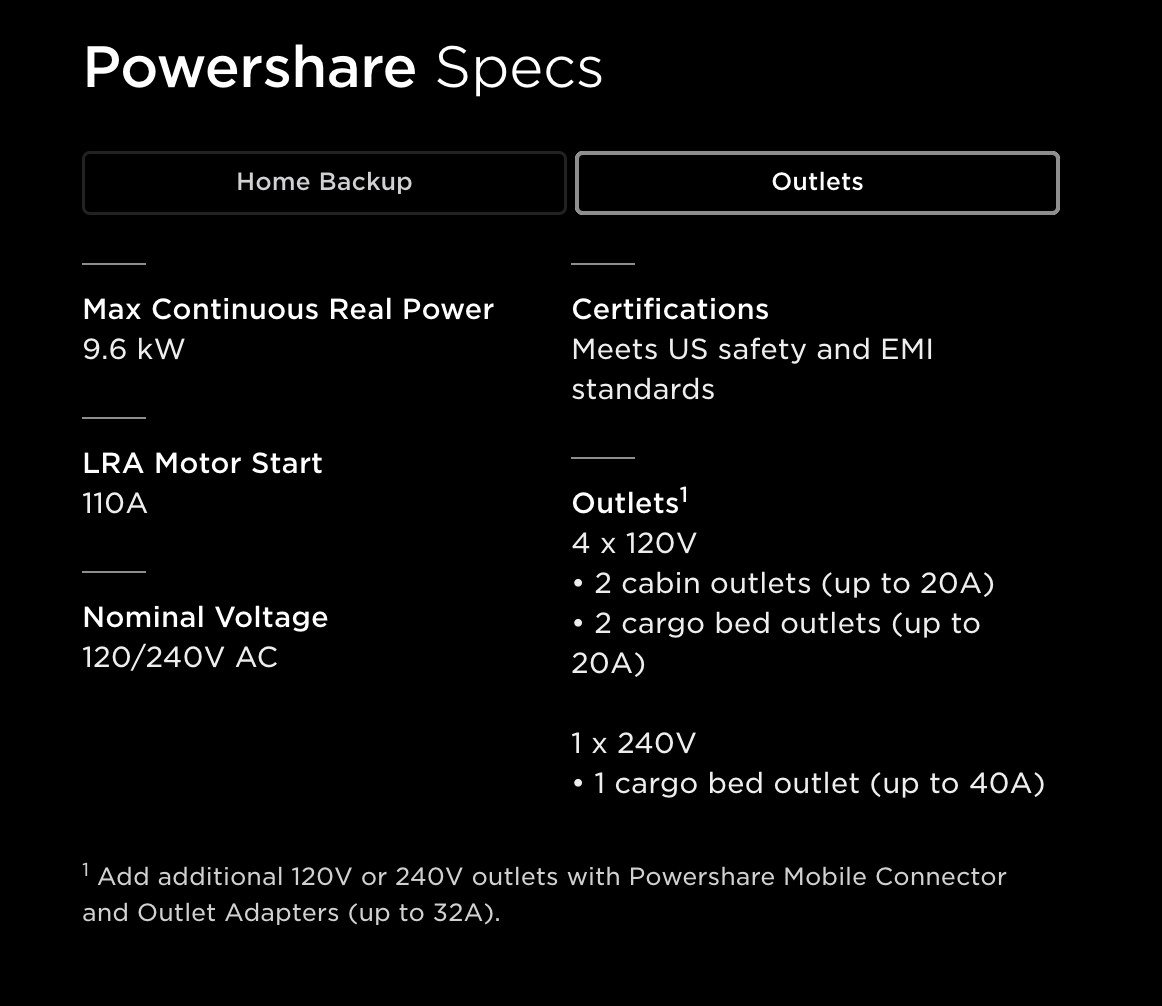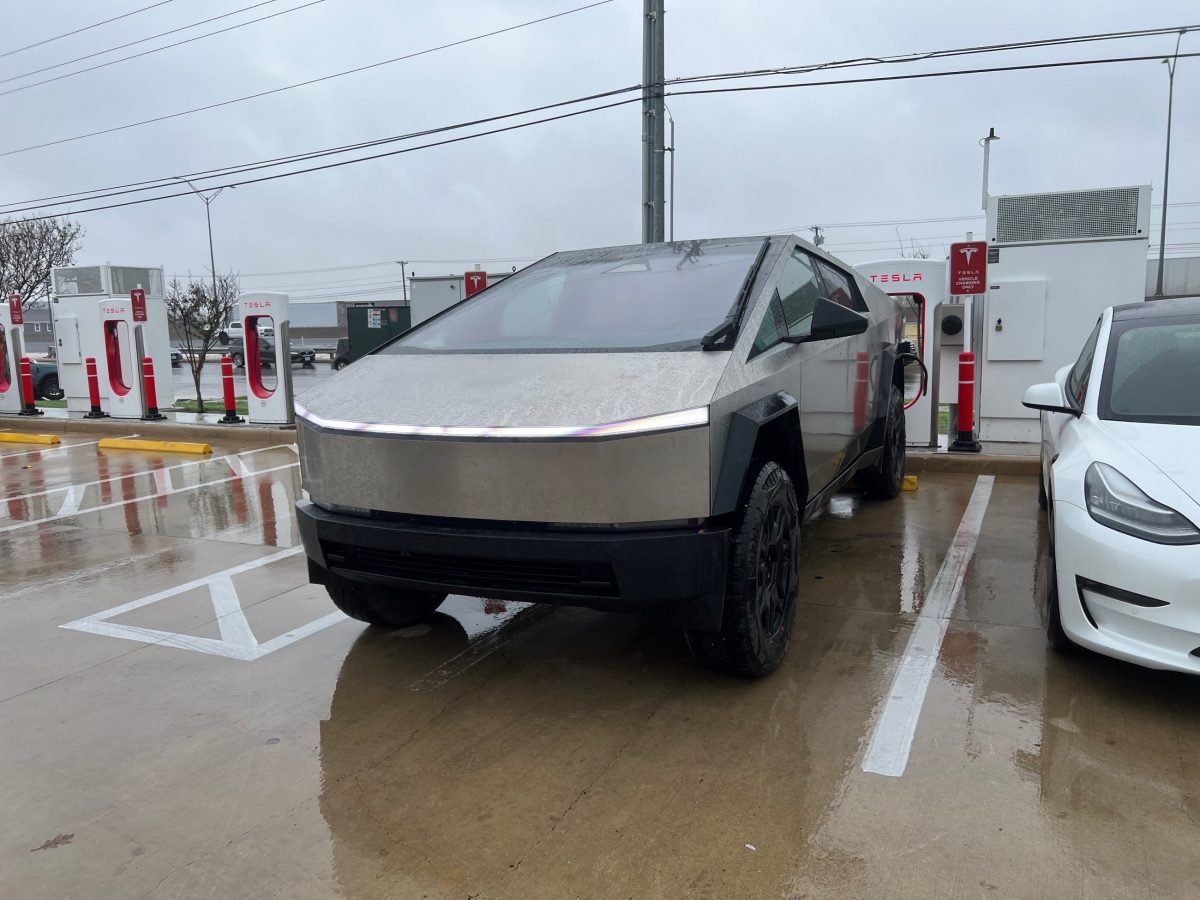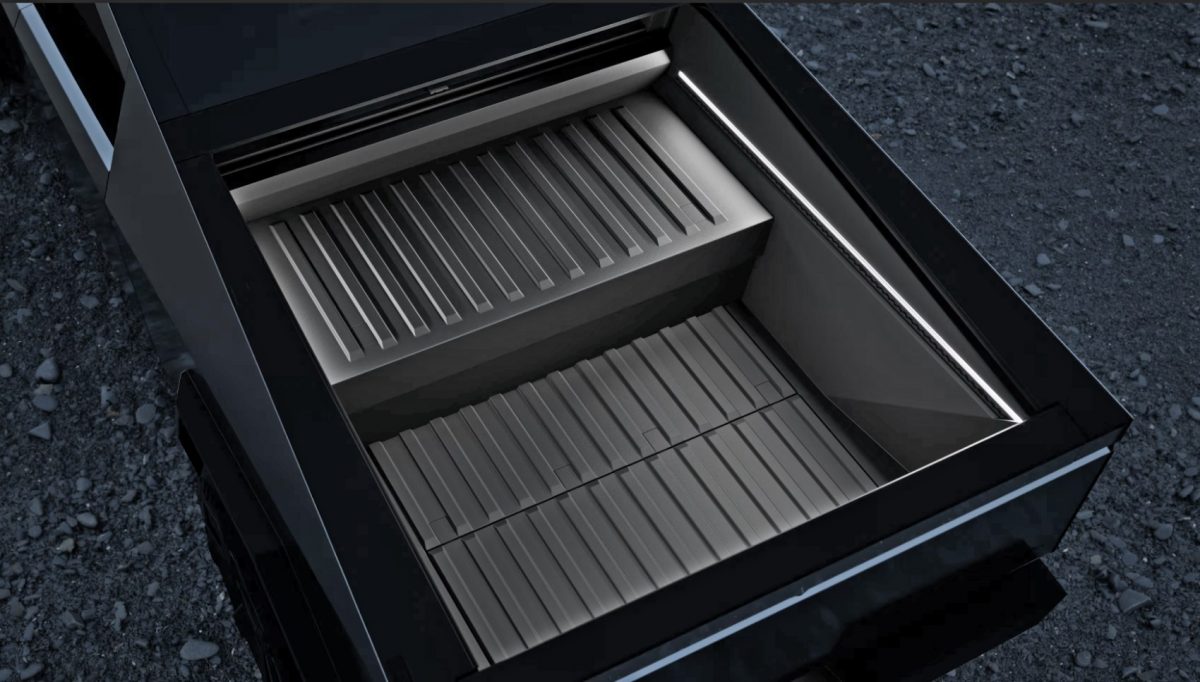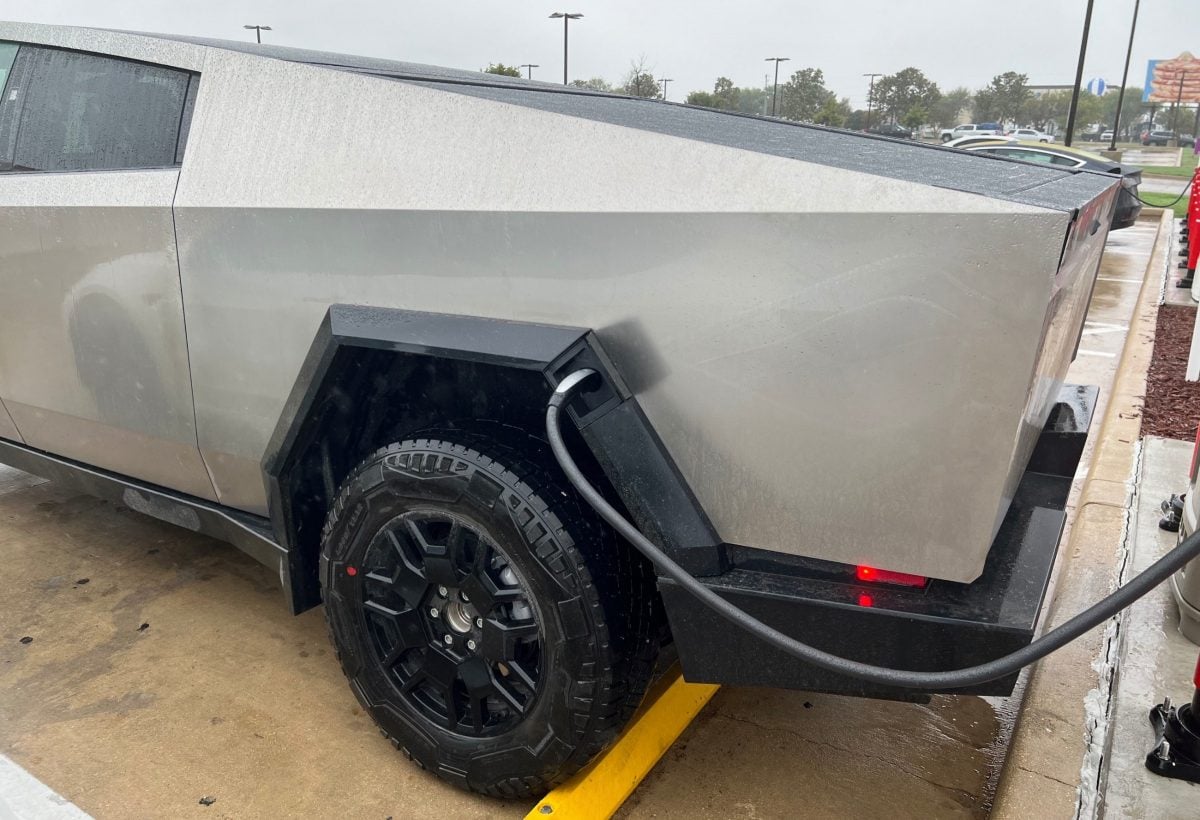When Tesla started the first deliveries of the Cybertruck on November 30, 2023, a few more details about powertrain and charging have emerged in recent days. We know now that the initial production run will focus on the tri-motor Cyberbeast and dual-motor All-Wheel Drive variant. These two trims will have a 123 kWh battery comprised of Tesla’s new in-house 4680 cells that they have been developing and ramping.
Given the size and weight (over 3 tons!) of the Cybertruck, most people were anticipating a battery pack in the range of 150 kWh or greater, like many of the Cybertruck’s rivals. But most likely, 4680 cell production is still limited, and therefore Tesla had to make the battery smaller to help scale the truck’s production. The government’s cap of $80,000 for EV subsidies of SUVs/trucks also probably played a role in Tesla’s calculations, because the battery pack is the most costly component of any EV. Tesla’s vehicles generally do not have the largest battery packs compared to rivals but often have greater range through an intense focus on drivetrain efficiency.
Level 2 AC Charging and Powershare
As far we know, the Cybertruck’s onboard AC charger is capable of 48 amp 11 kW charging, just like other dual motor Tesla vehicles. The company recommends the recently launched Universal Wall Connector for Level 2 home/work charging. Not only does the Universal Wall Connector deliver 48 amps to the vehicle, but it also has a new “Powershare” capability to send power from the Cybertruck back into the home to ask as a backup power source. Powersharing depends on new hardware inside the Cybertruck and the charging station. Cybertruck will be the only Tesla for vehicle-to-home power until the Tesla models are updated.
Cybertruck is capable of sending 11 kW (48 amp) back to the home, and up to 9 kW (40 amps) through the onboard outlets for vehicle-to-load (V2L) functions. The truck has a total of four 120-volt outlets and one NEMA 14-50 240-volt outlet at the back of the bed.

How long does it take to charge a Cybertruck at home?
The 123 kWh battery would take upwards of 12 hours to fully charge from 0 to 100% on a Level 2 home charger at 48 amps. Add another five hours if the truck is equipped with a Range Extended battery. These approximate calculations take into account charging efficiency losses.
Level 3 DC Charging
The charge port of the Cybertruck is located under a flap in the rear driver-side wheel arch. This placement allows Cybertrucks to easily charge at all existing V2 and V3 Supercharger locations. The majority of Superchargers in the US today are of the V3 (250kW) variety. But the Cybertruck was designed to be able to handle the full power of the newest V4 Superchargers which are beginning to roll out. The version 4 Superchargers have the capability to deliver up to 350 kW, and the Cybertruck’s large battery with 4680 cells is expected to take full advantage of that power output.
What is not clear yet is the charging curve. How long can the Cybertruck maintain a 350 (or even 250 kW) speed? With other Teslas, the charging curve is typically pretty steep with max power only holding for the first couple of minutes before aggressively throttling down. We will have to see if the 4680 cells with their stated increased power can maintain high-power charging for longer.

Range Extender?
Electric trucks are known to lose significant usable range when towing or hauling heavy loads. Tesla will be offering an optional external battery pack known as Range Entender that will take up 1/3 of the bed in exchange for 130 additional miles on the All-Wheel Drive trim. That works out to 38% more total range, so we can estimate the range extender to contain about 47 kWh of energy storage. This strategy allows Tesla to produce the Cybertruck more cheaply at the factory and offer a paid battery capacity upgrade for drivers who need it. The cost of the range extended is rumored to be around $16,000 based on leaks in the configurator source code.

Efficiency
With a 123 kWh battery and 340-mile (estimated) range on the All-Wheel Drive variant, it looks like Tesla is targeting ~362-watt hours (Wh) per mile. And 384 Wh/mile for the tri-motor Cyberbeast trim.
We know from experience that Tesla’s range figures tend to be on the optimistic side. It’s not impossible to hit the stated range, but you have to be driving slowly in perfect environmental conditions. We are generally seeing 20-25% higher energy consumption (than EPA figures) when driving Model 3s and Ys on the highway at 70 mph.
Other interesting details that emerged from deliveries include the power architecture of the Cybertruck. It will be the first Tesla with an 800-volt drivetrain high-voltage battery, and the first vehicle in the world with a 48-volt low voltage system for electronics. Most EVs have 400-volt propulsion batteries, and all cars have used the 12-volt battery for the better part of the last 100 years. The higher voltages of the Cybertruck should help with energy efficiency as lower amperage will be required to pass through wiring, resulting in lower energy loss to heat. Cost savings are another motivator for increasing voltage, as thinner gauge wiring can be used when amps are lower.

